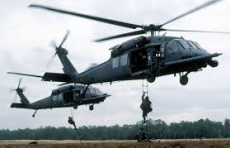
Email: ZYVC057@live.rhul.ac.uk
Total Article : 213
About Me:I'm a graduate student studying International Criminal Law and first started writing for King's News almost 4 years ago! My hobbies include reading, travelling and charity work. I cover many categories but my favourite articles to write are about mysteries of the ancient world, interesting places to visit, the Italian language and animals!

Wars have been a constant feature of the world and are embedded in society. Prussian general Clausewitz famously stated that wars are merely ‘a continuation of politics by other means’ and a branch of political science and international relations is dedicated entirely to the art of warfare. One of my favourite modules I have this year is ‘war and security’ in which we look at the different variants of war and the threat to human security caused by war crimes. War is a term that we use daily yet scholars have narrowed or broadened the word according to its context. A definition I personally find quite satisfactory is by Hedley Bull (1997) who calls wars ‘organised violence carried on by political units against each other’. In fact Hedley is stating that wars are no longer only between state actors but can be carried out by other political entities such as terrorists yet he does reiterate that in order for there to be a war there needs to be organised violence, which means an argument between two friends cannot be generalised into being called a war. Analysts estimate that a war can be called such when the death toll reaches 1000, yet according to this the Falkland War would not be considered a war as just under 1000 people were killed. Of course, we all consider it to be a war so as you can see the very definition of what a war is and the criteria it has to meet are very ambiguous even to experts in the field.
New wars vs old wars
In the 1980s Mary Kaldor noticed that warfare was changing substantially. She identified the wars she was witnessing as ‘new wars’. Whilst many consider Mary Kaldor’s definition to be too exaggerative as some of the features with which she defines new wars were already being used in the past, I believe Mary Kaldor coined this new term to redirect the focus of political scientists and analysts to how we need to adapt our war tactics to meet these new aspects emerging in wars. In order to truly understand how new wars are different let’s quickly look at what ‘old wars’ or traditional wars are thought to be! Traditionally, wars were like those described by Clausewitz in his book ‘On War’ (1832). Imagine a grey sky and a huge battle field, hundreds of men both on horses and on foot holding their weaponry and incited to begin the fight. Wars were between nations and as such were respected and seen as honourable so no sly or illicit tactic were used. Everyone obeyed the rules of wars.

New wars: new goals, actors and tactics
This started to change during the 1980s as more and more wars were no longer fought between states to gain territory but wars began to rise within states, usually due to internal ethnic problems, like in the Yugoslavian conflict in the 1990s that emerged from a crisis of ethnic boundaries. New wars are often linked to succession and questions of identity rather than imperialism. The actors of war switched from nations to an array of non-state actors which before were just marginal players in the game of warfare. These new actors are the new obstacle for reaching world peace and range from civil war parties and rebel groups to insurgents and warlords, from terrorists and militias to pirates and criminals. In many new wars the age and gender of war actors has also changed to include child soldiers, like in Congo and Uganda, and women in wars. Terrorists also appear to be the newest threating actors as Bush coined the term ‘War on terror’ after 9/11. Many question the use of the term war here though as it is a war against a concept, terrorism, not an actor per se and may be a coverage for a real war, the fight for oil. Not only have the goals and actors of war changed but so have the tactics. ‘Clean’ war tactics such as open battle are now a thing of the past as proven by the Revolution in Military Affairs (RMA) which provided new technology for war strategies. After RMA, for example, psychological and cyber warfare became two prominent areas of study. In failed states guerrilla tactics are heavily used and the element of surprise is key. Wars are more dependent on information gathering and networking, enhanced technological machines and sneaky tactics than ever before. Weapons of Mass Destruction are also pretty new and pose a constant threat as the taboo of warfare. Other aspects of new wars include their decentralised economy, usually internationally funded. Lastly, the increased effect media has on wars and how it is able to contort the reality in order to gain public support has become an incredible game-changer in warfare.
Can you name a few new wars and old wars? Is there really a difference or where the tactics used in new wars always used in old wars too? Hopefully this article has introduced you to the intricacy of warfare which characterises human life. Knowing what a war is is essential to political scientists as it leads us understanding how a war can be won, which is the ultimate million dollar question.
Image 1: http://www.globalsecurity.org/military/systems/aircraft/images/mh-60g-19990803hh60x2.jpg
Image 2: http://payload.cargocollective.com/1/3/111962/1463328/Economist1.jpg

0 Comment:
Be the first one to comment on this article.